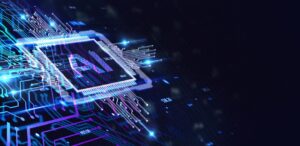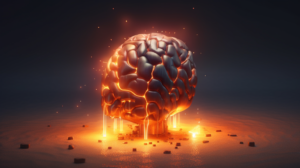Perspective: Art as a Means of Human Communication Remains Unchanged by AI

Exploring the Intersection of AI and Creativity
David Szalay’s Novel and the Nature of Creativity
David Szalay’s latest work, Flesh, has sparked discussions about the role of artificial intelligence (AI) in creative fields. This topic has gained traction in public conversations lately, particularly with advancements in AI capabilities, including its ability to generate short stories. Such developments have prompted some writers to feel anxious about their future job prospects.
The Misunderstanding of "Content"
In contemporary discourse, the term "content" often refers to any form of creative output, such as writing, music, or artwork. However, this definition reduces the richness of human creativity to something that can be merely packaged and delivered. In reality, creative works are not just products; they are meaningful acts of communication between individuals. The essence of art lies in its ability to convey emotions, experiences, and human connections that cannot be replicated by machines.
Human Connection in Creativity
- Art as a Communication Tool: Creativity is grounded in the human experience. Just as friendship flourishes through shared experiences and emotions, art thrives on the connections established between the creator and the audience.
- The Role of Mortality: An essential aspect of human creativity stems from the understanding of life, death, and shared experiences of joy and sorrow. Unlike humans, AI lacks life, mortality, and the accompanying emotional spectrum.
The Limitations of AI in Art
While AI has undeniably become a valuable tool in various creative processes, its capabilities remain fundamentally different from those of human artists. Technologies such as photography and painting have always integrated tools into the creative process. AI can assist in generating ideas or even completing tasks, but it cannot replace the intrinsic human touch that gives art its profound meaning.
Historical Context: Behind the Brush
Throughout history, art has been influenced by various technologies, yet the unique vision and perspective of artists have never been replaceable. Some might argue AI could potentially replace assistants in an artist’s workshop, yet it cannot replicate the visionary artists themselves. The human element imbues creativity with depth and significance that a machine cannot achieve.
Comparing AI with Chess and Sports
The capabilities of AI have been exemplified in fields like chess, where machines have outperformed even the best human players. However, this has not led to a decline in interest in the game. In fact, chess has seen a notable resurgence in popularity, highlighting the fact that the joy of playing lies in human interaction and competition.
Similarly, advancements in technology do not diminish the value of human creativity. The existence of machines that excel in tasks traditionally handled by humans does not erase the reasons individuals pursue artistic expression.
The Irreplaceable Human Element
- Participation and Experience: In sports, like chess, the human element remains essential. Competitions are compelling because they reflect human struggles and triumphs, not just the efficacy of superior technology.
- The Meaning of Creativity: In the realm of writing, while AI can produce text, the act of storytelling is deeply rooted in human experience and perspective, which AI cannot genuinely embody.
Understanding Intelligence and Creativity
To dissect the nature of intelligence, one must recognize its foundation in biological existence. Human intelligence is intertwined with human physicality, experiences, and the biological realities that shape our understanding of the world. Creativity, too, emerges from the human condition, reflecting our desires, fears, and relationships.
The Biological Basis of Creation
- Inherent Limitations of AI: AI lacks engagement with the core aspects of human existence—emotions related to love, loss, and connection. Unlike machines, which only replicate human behavior and thought processes, artistic expression is not just about the end product but the life’s journey contributing to that creation.
- Art as a Reflection of Life: Human creativity flourishes in the context of shared human experiences. This connection provides art with value and significance that machines are inherently incapable of replicating.
The Technological Misunderstanding
Reflecting upon the progression from mechanical musical players to contemporary AI models, it becomes clear that the essence of creativity remains rooted in the human experience. While technology continues to enhance and change the landscape of creative work, the fundamental human connection embedded in art and creativity cannot be overlooked or replaced.






